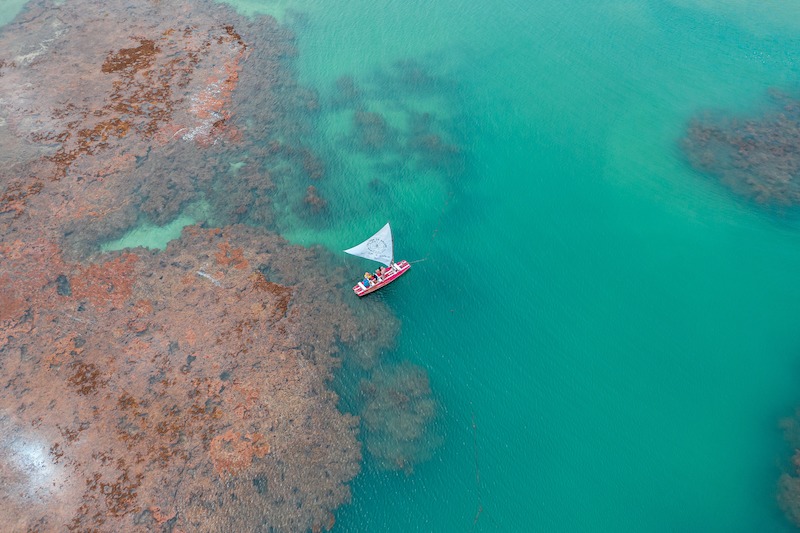- About
- Topics
- Picks
- Audio
- Story
- In-Depth
- Opinion
- News
- Donate
- Signup for our newsletterOur Editors' Best Picks.Send
Read, Debate: Engage.
| June 17, 2020 | |
|---|---|
| topic: | Ocean Pollution |
| tags: | #oil spill, #ocean pollution |
| located: | Kuwait, Saudi Arabia, USA, Niger |
| by: | Ama Lorenz |
A significant percentage of oil spills in the ocean comes from oily storm water that through drainage finds its way to the ocean from:
Approximately 2.6 billion litres of waste oil finds its way to the ocean annually with over 50% of that amount coming from waste disposal and land drainage including the improper disposal of motor oil that easily flows to the oceans through stormwater.
Activities like offshore oil production operations including drilling plus leaks and spills from tankers and ships contribute to approximately 8% of the total amount of oil waste that finds its way to the ocean surfaces.
Furthermore, nearly 20% originates from the routine maintenance of water vessels like ships while 13% comes from hydrocarbon particles from the air pollution onshore. The remaining over 8% comes from seafloor through natural seepage.
Oil spills, depending on their composition and relative density, will typically spread on the surface of the water when it enters the ocean. In most cases, the slick oil that is formed remains cohesive but in some instances break due to the waves, wind force and currents especially in the rough seas that make the slick slowly spread to the large areas spreading the impact to the open oceans, terrestrial and marine habitats plus the coastal regions.
In some cases, the oil spills may contain volatile organic components that have the ability to partially evaporate making the oil lose about 20-40% of its mass making it become just a bit more denser thus more viscous especially becoming resistant to natural flow.
After some time due to actions of weathering, the oil deteriorates thus disintegrating through photolysis and biodegradation depending on the availability of oxygen, microorganisms and oxygen in the presence of sufficient temperatures.
Over history, the oceans have been unfortunate to experience a number of oil spills that led to significant effects that remain infamous to date. The following are some of the most known oil spills:
In the event an oil spill happens, the insulating ability of fur-bearing mammals is destroyed and bird’s with water repellent feathers are exposed to harsh elements that are detrimental to their health.
When these creatures lack their insulating and water repellent capabilities, then the chances of these creatures surviving the cold water and dying of hypothermia largely increase exposing them to significant threat.
Some marine life like fish and shellfish may take some time to come into contact with the threat but when they do, there may be cases of stunted growth, fin erosion, reproduction impairment, enlarged livers and some changes in the respiration and heart rates. Additionally, oil has some adverse effects on the survival of eggs and larvae.
Oil spills in the ocean have tremendous potential to create serious harm to wildlife other than sea creatures, reptiles and amphibians. Wildlife will grow vulnerable to the toxic effects of oil spills including deterioration and smothering f thermal insulation plus significant damage to reproductive behaviours and systems.
Apart from that, there could be significant ecological effects in the long-run including the damage to the marine organic substrate, which will go a long way in interrupting the food chain that may lead to the change or disappearance of some populations of species.
The recreational appeal of the coastal regions that are mostly populated with tourist attractions and recreational facilities and activities like scuba diving, snorkelling, swimming, boating, fishing and places like beaches, nature preserves and parks will experience a he threat.
This is because instances of oil spills lead to invasion of and pollution of these areas an activities hence negatively affecting the various human activities that people engage in along the coast leading to long-term and devastating effects on both the society and local economy. Furthermore, the property market will tend to dwindle making the investment horizon along the coast a risky endeavour.
The cleanup and recovery of oil spills largely depend on the type and characteristics of the environment that is involved. For instance, the activities could depend on whether the area affected is an open ocean, wetland or the coastal region.
Some of the measures to control the pollution could include removal of the oil spills through filtering, skimming and in situ combustion or containment.
Other control or preventive measures include:
It is imperative to note that oil spill countermeasures for the process of cleaning up and removing oil spills are generally applied based on the interrelated factors like health risks, ecological protection and socioeconomic reasons.
By copying the embed code below, you agree to adhere to our republishing guidelines.

